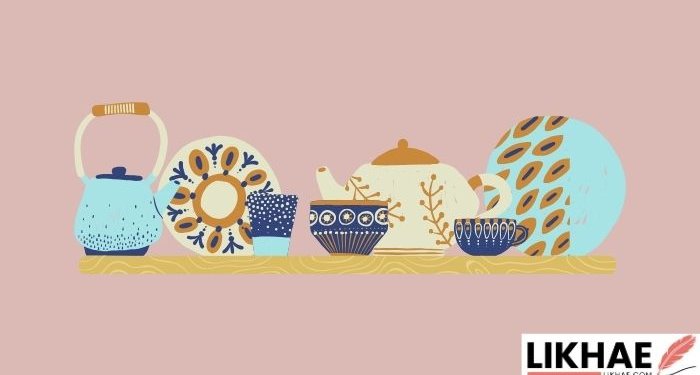It is crucial to know about the remarkable change in utensils with time and its effects on human health because utensils are the primary things used daily. During the Stone Age, nomads used stone-made things. As humans started emerging, they used different raw materials.
They also used Metal, iron, wood, plastic, brass, bronze, and clay. Human health and food intake are essential requirements for survival. Therefore, people of every age work to improve them. The change in pottery and design materials is proof of human development.
Stone-Made Pottery
They cut the stones to make pots of it according to their needs. We are amazed to see their use of mind and how conscious they are about their daily life activities. They work hard to groom themselves.
Bones
Archaeologists found artifacts of bones that belonged to 18,000 years before. They must use the bones of dead animals for making pots-sheds. Archaeologists, during excavation, found the pottery made up of cow bone.
Bronze
The yellow color of this metal is still seen as rare. https://recipes.timesofindia.com/articles/kitchen-hacks/cooking-in-these-5-metal-utensils-can-be-dangerous-for-your-health/photostory/64001783.cms
Wooden
Utensils were made of wood in the 4th century. Archaeologists, during the excavation of ancient Sites, found wood pots and sheds. Carbon dating gives the date of formation of materials.
Clay
Clay pottery was found 28,000 years before the common era. In 29,000 BC, pitchers were formed with clay. I like clay pottery because of its charm.
Aluminum
The researchers researched aluminum utensils, which have some pros and cons. It is surprising how utensils affect health. If the aluminum pots are not cleaned constantly, they can cause diseases like dementia and osteomalacia.
Brass
It contains a nutritional value of approximately 93%. But the pros of it are the following
It enhances immunity and improves the process of digestion.
Plastic
The evolution of plastic pottery, which began in the 1940s, is a continuous and pressing issue. Unfortunately, we use plastic pottery daily, but it’s not worth it due to its harmful effects on humans and the environment.
The following are the harmful effects of plastics
- It disrupts the endocrine system.
- Cases Cancer
- Obesity
- Disabilities etc.
Glass
It affects humans when they break. Otherwise, its formation is dangerous for workers as carbon dioxide gas is released.
Stainless Steel
Its chemical leaches into food. Acidic food reacts with aluminum, and the particles move into food and then into the body.
Conclusion
Change is a rule of nature, and then how humans can’t. Clay housewares are more beneficial than others because they retain the taste of ingredients. The nutrients interact with each other, and the aim of food is fulfilled. Moreover, philosophers have long believed in the healing power of nature. The housewares of clay, being made from natural materials, align with this belief and are enhanced by the addition of components.
Our ancestors led simple lives, and as a result, they faced fewer health challenges. However, in our relentless pursuit of progress, we’ve inadvertently created a world of complex diseases, often requiring equally complex treatments. This should make us all the more aware of the impact of our actions. Do you see the contrast and agree with my perspective?














